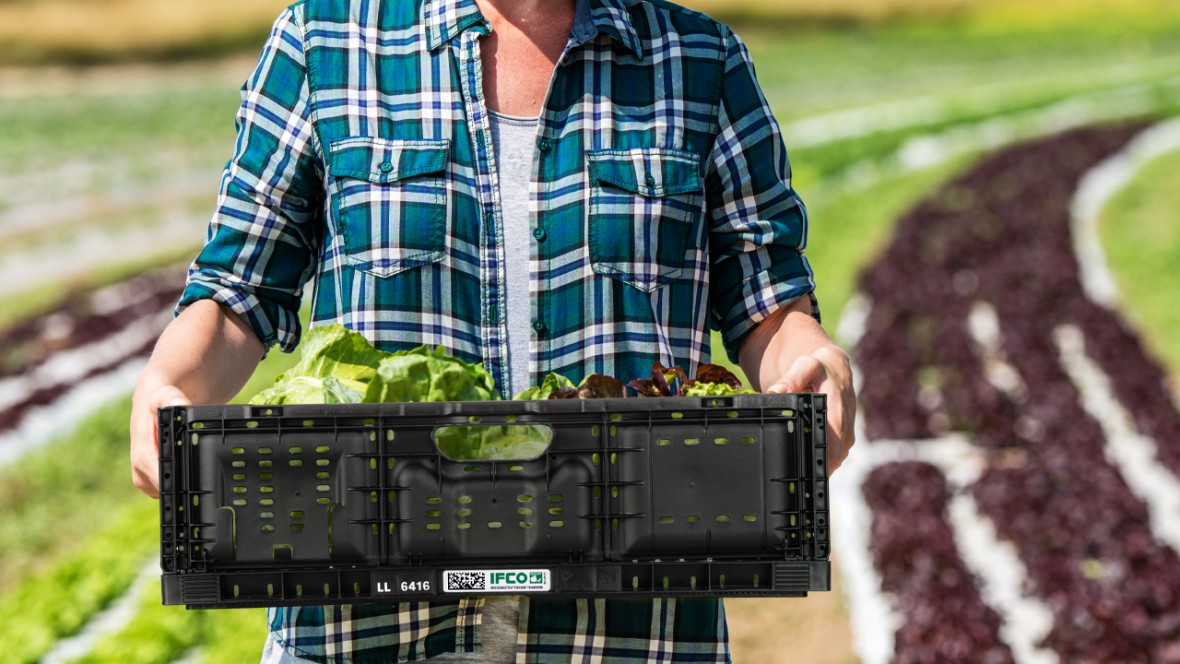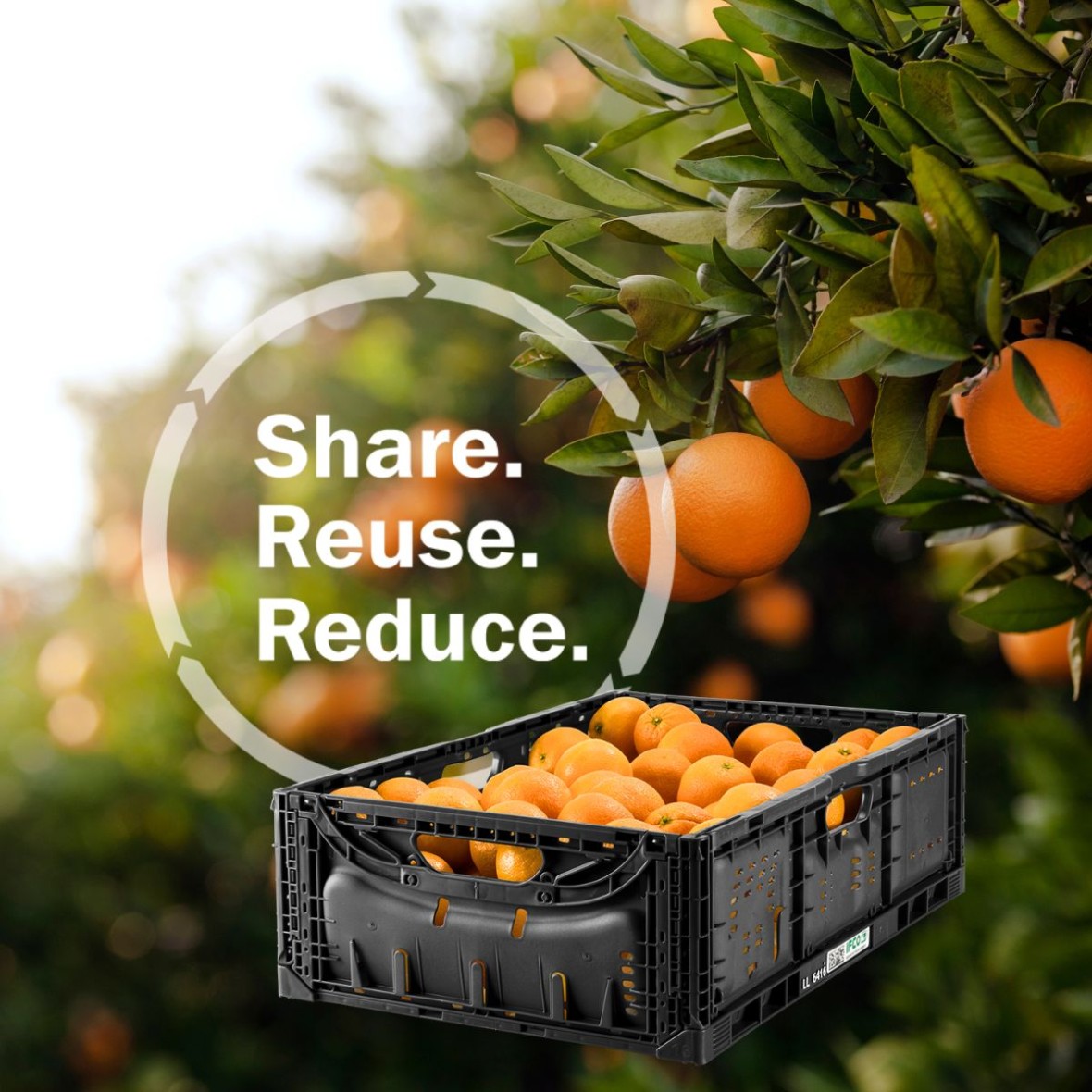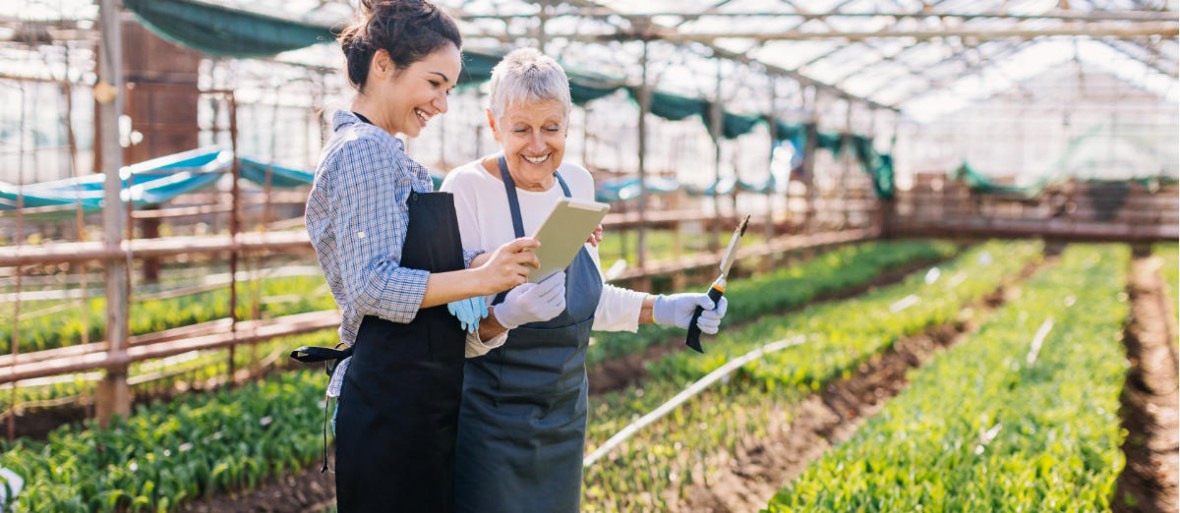On the surface, calculating packaging costs can seem a simple enough process. To achieve sustainable cost efficiencies in the supply chain, however, there are supply chain costs beyond acquisition that should be considered. IFCO end-to-end studies consistently uncover significant cost savings and deliver rapid results for a competitive edge.

Acquisition costs for packaging really are only the tip of the iceberg. The cost of using the wrong type of packaging is often overlooked, as are the benefits of the right kind. By taking a holistic view in end-to-end studies of fresh food operations, IFCO is in a position to recommend best practices in packaging. An IFCO end-to-end study and cost-analysis covers the entire packaging value chain and results in sustainable cost efficiencies in the supply chain.
"As my team is made up of experts in the field, our knowledge base extends from harvest all the way to retail shelves," explains Bryan Tate, Vice President Category Management, North America. "We understand from personal experience exactly how RPCs positively impact fresh produce and the fresh food supply chain."
On top of the possibility of an individual end-to-end study, IFCO can also provide independent scientific documentation that details the impact of reusable packaging containers on cost efficiencies in the supply chain. Both the Fraunhofer Institute of Material Flow and Logistics in Germany and the California Polytechnic State University in the US have carried out in-depth research into cost efficiencies with IFCO RPCs and were able to quantify the savings in considerable detail.
Overall, the studies have concluded, moving to IFCO RPCs offers a potential 23% savings in packaging-related overheads, most notably by reducing handling costs, eliminating food waste or damage, as well as cutting down on transport costs.

How can the right choice of packaging improve cost efficiencies beyond the initial cost of packaging materials? Tate likes to draw on an insightful analogy to highlight the benefits of RPCs for the entire fresh food supply chain.
"One of the most fascinating things I see is what I call the shuffling of the deck," Tate says. "At the warehouse, you’ll see hundreds of boxes arriving from different growers that will need to be divided up and turned around fast. Where you have single-use boxes involved, you get pallets that resemble a badly shuffled deck of cards. The pallets turn into unstable, messy and damaged stacks that are time-consuming and labor-intensive to deal with."
"They don’t fit together anymore, however much you try," Tate continues. "All the while, such lengthy processes increase instead of decreasing labor costs. And also increase the potential for produce damage and shrink. In contrast, thanks to their standardized footprint, IFCO RPCs create stable, sturdy decks. The shuffling of these decks therefore gets easier, faster and more routine, which leads to substantial cost efficiencies and a reduction in labor costs. This labor-saving advantage of IFCO RPCs rings true across every step in the supply chain.

Standardized formats and sizes lead to standardized motions and movements. As teams invariably adapt rapidly to the easy handling of IFCO RPCs, the savings soon mount up. The IFCO boxes snap quickly into shape and stack sturdily with a one-touch system. In comparison, single-use packaging often relies on time-consuming and back-breaking steps to process, particularly at the retail end of the supply chain.
"With a corrugated box, you’ll have many people handling your produce before the customer even sees it," Jon Brooks, Vice President, Retail Sales in North America, explains. "There’s packing, repacking, unpacking, picking and placing of produce for displays. This constant handling takes up valuable time for your teams," he adds. "And each touch has the potential to damage or contaminate your produce."
Invariably, the IFCO one-touch system is viewed positively for operations at the front of the store. Its smart ergonomic design ensures that associates can build displays and replenish shelves faster and more efficiently. IFCO RPCs are easily moved and placed in position, so they can go straight from storage to display. Empty RPCs are quickly folded and palletized, so there’s no baling required.
Given that the pandemic has also hit daily operations in the retail sector and food supply chain particularly hard, such time-saving features should not be underestimated. They translate directly into improved customer service on the floor and bring added value to the customer experience. In a nutshell, your associates are able to better service the individual needs of your customers. Staff remain on the floor providing advice and assistance — rather than out the back dealing with single-use containers.
This one-touch system brings further benefits, as Julia Boulter, Senior Manager, IFCO Market Intelligence, highlights: "IFCO RPCs can be placed directly on display in stores, so fresh produce moves from field to shelf without the need for handling." Only the customer touches the produce once it leaves the field.
In the field, at the grower where the produce is packed, is also where the savings actually begin, and they continue throughout all nodes of the supply chain. Substantial and sustainable cost efficiencies in the supply chain come from the accumulated impact of the smart design, the one-touch system and the IFCO SmartCycle™ pooling system.
“IFCO RPCs can be placed directly on display in stores, so fresh produce moves from field to shelf without the need for handling”

An essential step in the fresh food supply chain involves pre-cooling — or "preliminary cooling" — of crops. Its main purpose is the rapid removal of field heat from freshly harvested produce. The goal is to bring its temperature down to the optimal level for storage and transportation. Pre-cooling is a vital process, as it reduces fruit respiration rate, inhibits microorganism growth and extends shelf life.
"Getting harvest heat out of the packaging faster has a huge impact on the grower’s productivity," says Tate. "We’ve seen how the unique ventilated design of IFCO RPCs can speed up cooling rates anywhere between 12% to 25% compared to using one-way containers." Lowering harvest temperatures more rapidly cuts down on the rate of ethylene production and moisture loss during transportation. The superior features of IFCO RPCs bring further benefits as the food moves along the supply chain.
Moving fresh produce safely and securely often requires a delicate balancing act between creating optimal conditions for your fresh produce and protecting it from the trials of transportation. The strength of IFCO RPCs, their optimized structural integrity and their standardized footprint combine to ensure space-saving and sturdy stacking of produce inside the trucks. More fresh produce is therefore transported more securely each trip, which leads to fewer rejected loads. Ultimately, these advantages combine to cut down on total deliveries — leading to fewer trips, trucks and transportation emissions.
Experience confirms that IFCO RPCs also ensure a reduction of food loss during transit, and, as a result, sustainable cost efficiencies in the fresh food supply chain. "Customers who have changed over to IFCO RPCs report an increase in fresh produce shipments that arrive intact and undamaged," explains Brooks. "The sturdy, standardized design keeps the packaging intact throughout the logistic leg."
IFCO can identify cost efficiencies via an individual end-to-end study for customers. Such studies drill down into potential savings for every type of fresh produce, season and individual operations. Customers who are moving avocados, for instance, have seen savings of over 90 cents per case. While with tomatoes you generally see an average of 30-40 cents savings per case.
These cost efficiencies in the supply chain extend over labor costs, reduction in food loss and damage, cost of freight and baling. An IFCO end-to-end study accounts for each and every potential cost input and touchpoint as food moves along the supply chain. It seeks to estimate reliably cost savings and optimize cost efficiencies. Each identified activity, however small, can incrementally impact the overall cost.
"We’ve quantified that the value of using standardized rigid containers will manifest in many ways," explains Tate. "Routine tasks just get easier and more efficient. At times, the difference measures down to portions of a second that a rigid container can make to a routine task. "Take, for instance, forklift truck drivers. If they are confident that their load is safe and more secure, they can drive a little faster," continues Tate. "All these half seconds start to add up to significant and sustainable cost efficiencies in the supply chain in the long run. As well as enhanced safety and peace of mind for the drivers and staff in the warehouse."
Peace of mind is not something you can ignore, especially when it revolves around food safety and sustainability. IFCO RPCs eliminate a really big risk for growers, the one of product recall. The financial cost of the resulting damage to reputation from food safety issues are difficult to quantify.
"With this in mind, any cost-efficiency measures must always include better food hygiene," adds Tate. "When it comes to food safety, there is no room for compromise at IFCO." This clear, uncompromising position also covers sustainability.
Damaged produce means that production, harvest, packaging and shipping are all sunk costs. It produces more waste — of land, energy, food and water — at a time when our planet is already struggling enough with trash and recycling issues. Poorly designed packaging solutions therefore only add to these problems. Waste in your packaging converts into waste elsewhere. And food is simply too valuable to end up as waste in landfills.

This is why IFCO is committed to helping growers, distributors and retailers incorporate and document sustainability across their operations. We can annually estimate the overall impact of using IFCO RPCs. IFCO provides retail and grower partners with a sustainability certificate, renewed annually, which highlights the positive environmental impact IFCO RPCs have on your operation.
The IFCO SmartCycle™ pooling system is a well-established example of a circular economy model that is applied to create a more sustainable fresh food supply chain while maximizing its efficiency. By ensuring the safe and hygienic sharing and reuse of sturdy RPCs, we help cut down on waste and inefficiencies. We have been doing this since 1992.
What is your packaging’s total cost impact on the entire fresh food supply chain? If you want to know the answer, get in touch!
Stay up to date
Want the latest fresh food packaging industry knowledge delivered straight to your inbox? Subscribe to our newsletter and get the latest news, trends, articles and more!
